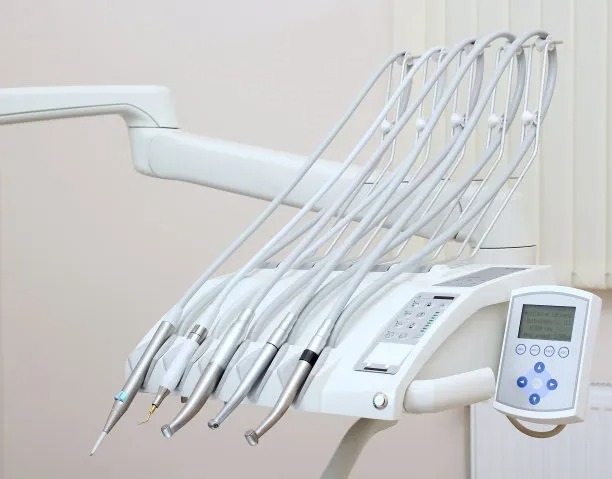Understanding the Procedure and Aftercare Involved in Extracting a Tooth for Optimal Oral Health
Summary: Extracting a tooth is a common dental procedure that aims to restore optimal oral health. This article delves into the procedure itself, highlights the preparation required prior to extraction, explains the necessary aftercare to ensure smooth healing, and discusses the potential complications that may arise. Proper understanding of these aspects can help patients feel more at ease and promote better recovery. By taking the right steps before and after the extraction, patients can minimize pain, reduce the risk of infection, and ultimately contribute to their long-term oral health. This detailed examination will serve as a guide for anyone considering or preparing for a tooth extraction.
1. Understanding the Tooth Extraction Procedure

The tooth extraction procedure starts with a comprehensive consultation, where the dentist assesses the condition of the tooth and surrounding gums. Diagnostics such as X-rays may be conducted to evaluate the tooths root system and the overall health of the mouth. This initial step is crucial in determining whether a tooth can be salvaged or if extraction is necessary.
Once its determined that extraction is the best option, the dentist will discuss the method of anesthesia. Local anesthesia is commonly administered to numb the area around the tooth, ensuring that the patient feels no pain during the procedure. In some cases, sedation options may also be offered for those who experience anxiety during dental visits.
The extraction itself may vary slightly depending on the tooths position. For impacted teeth, such as wisdom teeth, incisions may be needed to remove gum tissue. For simple extractions, the dentist will use specialized tools to loosen the tooth and gently pull it out. Understanding this procedure helps alleviate any anticipatory fears associated with dental extractions.
2. Preparing for a Tooth Extraction
Before the extraction, its essential for patients to follow specific guidelines to ensure a smooth procedure. Patients should inform their dentist about any medications they are taking as certain drugs, such as blood thinners, might require adjustments prior to surgery. Avoiding alcohol and tobacco can also contribute to better outcomes.
Its advised to eat a light meal on the day of the extraction to maintain energy levels, especially if sedation is not going to be used. Staying hydrated is equally important. However, it’s crucial to avoid solid foods that can be difficult to chew or cause complications later.
Patients should also arrange for a ride home after the procedure, especially if sedation is involved. Having someone to assist post-extraction can lead to an overall better recovery experience, as medications and immediate care may be needed shortly after leaving the dental office.
3. Post-Extraction Care and Recovery
The aftercare following a tooth extraction is critical for promoting healing and preventing complications. One of the first recommendations is to keep gauze over the extraction area for a few hours to control bleeding. If bleeding persists, the gauze should be replaced and bitten down on for another 30-45 minutes.
Patients should be mindful of their activity levels. Strenuous activities and heavy exercise should be avoided for at least 24 hours post-extraction. Rest is paramount, as it allows the body to focus on healing. Pain management is often necessary; over-the-counter pain relievers or prescribed medications can help manage discomfort.
Additionally, maintaining oral hygiene is vital, but patients should avoid vigorous rinsing or brushing directly on the extraction site for the first few days. Instead, gentle rinsing with warm salt water can promote healing while minimizing the risk of infection. Following these aftercare tips can significantly enhance the recovery process.
4. Potential Complications to Watch For
While tooth extraction is generally safe, it is important to be aware of potential complications. One common issue is dry socket, a condition that occurs when the blood clot at the extraction site fails to form or dislodges. Symptoms include severe pain and a bad odor. If one experiences these symptoms, contacting the dentist immediately is essential.
Infection is another risk after extraction. Any signs of increased swelling, fever, or persistent pain may indicate an infection. Timely intervention can prevent the condition from worsening.
Lastly, nerve damage can occur in rare cases, particularly with lower wisdom teeth extractions, potentially leading to numbness or tingling in the tongue, lips, or chin. Patients should talk to their dentist beforehand about these risks and how they can be mitigated to ensure they feel secure throughout the treatment process.
In summary, understanding the procedure and aftercare involved in extracting a tooth is crucial for optimal oral health. Preparation, care during the procedure, and diligent aftercare can prevent complications and promote healing. Moreover, being informed equips patients with the knowledge to better navigate their dental treatment with confidence.
This article is compiled by Vickong Dental and the content is for reference only.


